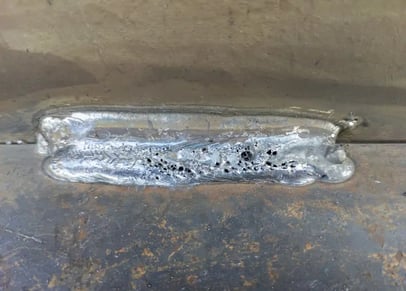Professional Recommendations on What is Porosity in Welding and Just How to Resolve It
Professional Recommendations on What is Porosity in Welding and Just How to Resolve It
Blog Article
Comprehending Porosity in Welding: Discovering Causes, Impacts, and Prevention Strategies
Porosity in welding is a persistent difficulty that can dramatically affect the quality and stability of welds. As experts in the welding market are aware, comprehending the reasons, results, and prevention techniques associated with porosity is crucial for attaining robust and reliable welds. By delving into the origin of porosity, examining its detrimental impacts on weld quality, and discovering reliable prevention approaches, welders can improve their understanding and skills to produce high-grade welds constantly. The detailed interplay of variables contributing to porosity needs a comprehensive understanding and a positive method to guarantee effective welding results.
Common Reasons For Porosity
Porosity in welding is largely brought on by a combination of aspects such as contamination, incorrect shielding, and inadequate gas protection during the welding procedure. Contamination, in the form of dust, oil, or rust on the welding surface, develops gas pockets when heated up, resulting in porosity in the weld. Improper protecting occurs when the securing gas, commonly made use of in procedures like MIG and TIG welding, is incapable to fully secure the molten weld swimming pool from responding with the bordering air, leading to gas entrapment and succeeding porosity. Furthermore, poor gas coverage, typically because of incorrect circulation prices or nozzle positioning, can leave parts of the weld unprotected, allowing porosity to develop. These variables jointly add to the formation of spaces within the weld, compromising its honesty and possibly creating structural concerns. Recognizing and addressing these usual reasons are essential actions in stopping porosity and making certain the quality and stamina of welded joints.
Results on Weld Quality
The presence of porosity in a weld can substantially compromise the overall top quality and stability of the welded joint. Porosity within a weld creates spaces or cavities that damage the structure, making it a lot more susceptible to breaking, rust, and mechanical failure.
Moreover, porosity can impede the performance of non-destructive testing (NDT) techniques, making it testing to discover various other defects or interruptions within the weld. This can lead to significant safety issues, especially in crucial applications where the architectural integrity of the welded parts is extremely important.

Avoidance Techniques Review
Given the detrimental impact of porosity on weld high quality, reliable prevention methods are vital to keeping the structural integrity of bonded joints. One of the main prevention techniques is comprehensive cleansing of the base materials prior to welding. Impurities such as oil, grease, rust, and wetness can add to porosity, so making certain a clean work surface is vital. Correct storage space of this welding consumables in completely dry problems is additionally vital to stop moisture absorption, which can cause gas entrapment during welding. In addition, choosing the appropriate welding criteria, such as voltage, existing, and take a trip speed, can aid minimize the threat of porosity formation. Making sure appropriate shielding gas circulation and protection is an additional vital avoidance method, as insufficient gas insurance coverage can lead to climatic contamination and porosity. Appropriate welder training and qualification are essential for applying precautionary steps efficiently and constantly. By incorporating these avoidance strategies into welding techniques, the occurrence of porosity can be substantially reduced, causing more powerful and much more reputable welded joints.
Significance of Proper Protecting
Appropriate shielding in welding plays a critical function in preventing atmospheric contamination and making sure the integrity of welded joints. Protecting gases, such as argon, helium, or a mix of both, are generally made use of to safeguard the weld swimming pool from reacting with aspects in the air like oxygen and nitrogen. When these responsive aspects enter call with the hot weld swimming pool, they can trigger porosity, resulting in weak welds with lowered mechanical properties.

Inadequate shielding can cause numerous defects like porosity, spatter, and oxidation, compromising the structural stability of the bonded joint. Consequently, adhering to correct shielding practices is necessary to create high-quality welds with minimal defects and ensure the durability and integrity of the bonded elements (What is Porosity).
Surveillance and Control Methods
How can welders successfully monitor and regulate the welding process to make sure optimal outcomes and prevent flaws like porosity? By constantly keeping track of these variables, welders can recognize deviations from the ideal conditions and make instant modifications to stop porosity development.

Additionally, applying appropriate training programs for welders is important for checking and controlling the welding procedure properly. What is Porosity. Informing welders on the significance of maintaining constant Get More Info criteria, such as proper gas shielding and travel rate, can assist avoid porosity problems. Routine analyses and accreditations can additionally ensure that welders excel in monitoring and managing welding processes
Additionally, using automated welding systems can boost tracking and control abilities. These systems can specifically manage welding specifications, lowering the chance of human error and ensuring regular weld quality. By incorporating sophisticated surveillance modern technologies, training programs, and automated systems, welders can effectively check and regulate the welding process to minimize porosity issues and accomplish top notch welds.
Final Thought

Report this page